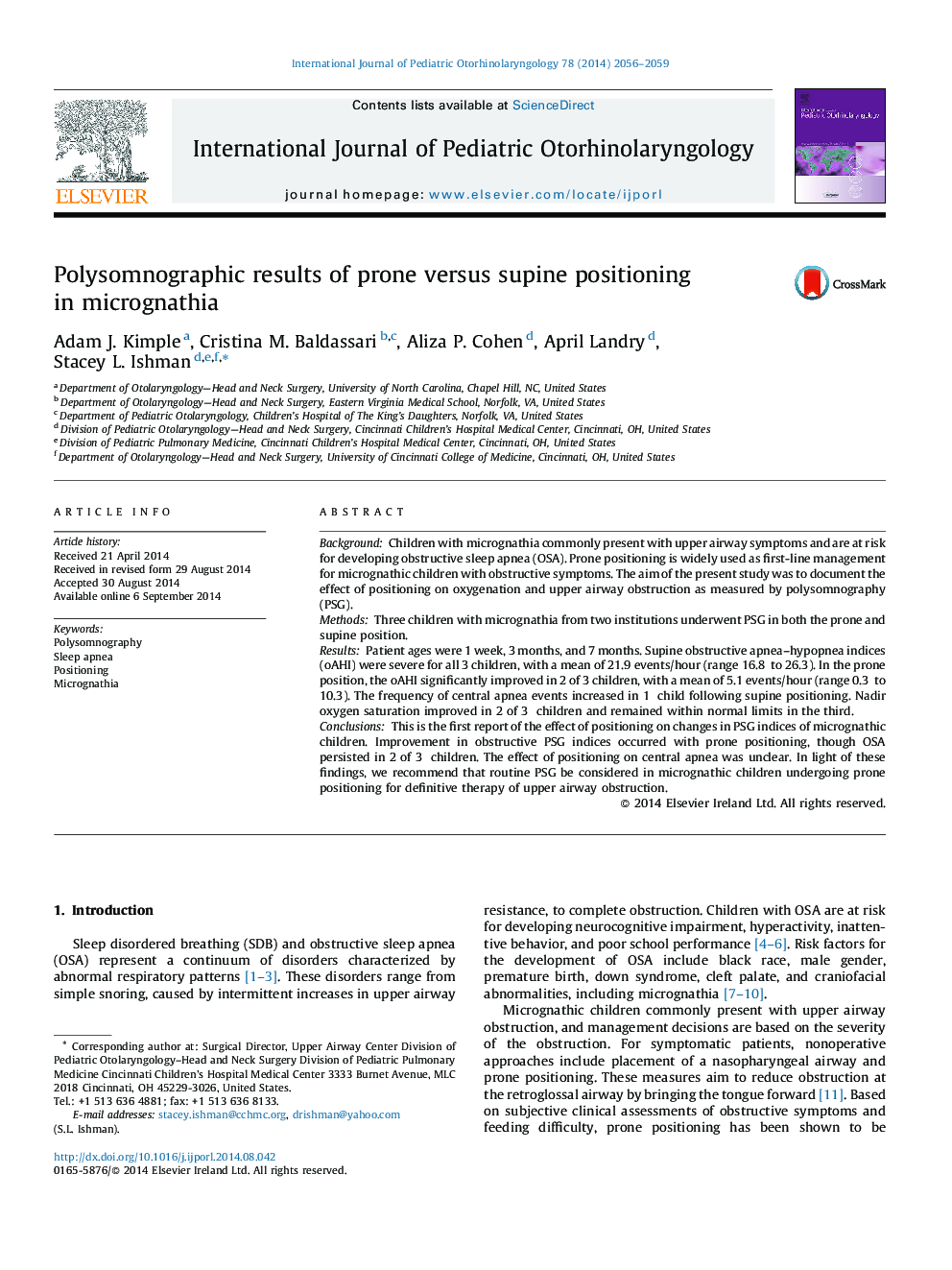| Article ID | Journal | Published Year | Pages | File Type |
|---|---|---|---|---|
| 4111780 | International Journal of Pediatric Otorhinolaryngology | 2014 | 4 Pages |
BackgroundChildren with micrognathia commonly present with upper airway symptoms and are at risk for developing obstructive sleep apnea (OSA). Prone positioning is widely used as first-line management for micrognathic children with obstructive symptoms. The aim of the present study was to document the effect of positioning on oxygenation and upper airway obstruction as measured by polysomnography (PSG).MethodsThree children with micrognathia from two institutions underwent PSG in both the prone and supine position.ResultsPatient ages were 1 week, 3 months, and 7 months. Supine obstructive apnea–hypopnea indices (oAHI) were severe for all 3 children, with a mean of 21.9 events/hour (range 16.8 to 26.3). In the prone position, the oAHI significantly improved in 2 of 3 children, with a mean of 5.1 events/hour (range 0.3 to 10.3). The frequency of central apnea events increased in 1 child following supine positioning. Nadir oxygen saturation improved in 2 of 3 children and remained within normal limits in the third.ConclusionsThis is the first report of the effect of positioning on changes in PSG indices of micrognathic children. Improvement in obstructive PSG indices occurred with prone positioning, though OSA persisted in 2 of 3 children. The effect of positioning on central apnea was unclear. In light of these findings, we recommend that routine PSG be considered in micrognathic children undergoing prone positioning for definitive therapy of upper airway obstruction.
